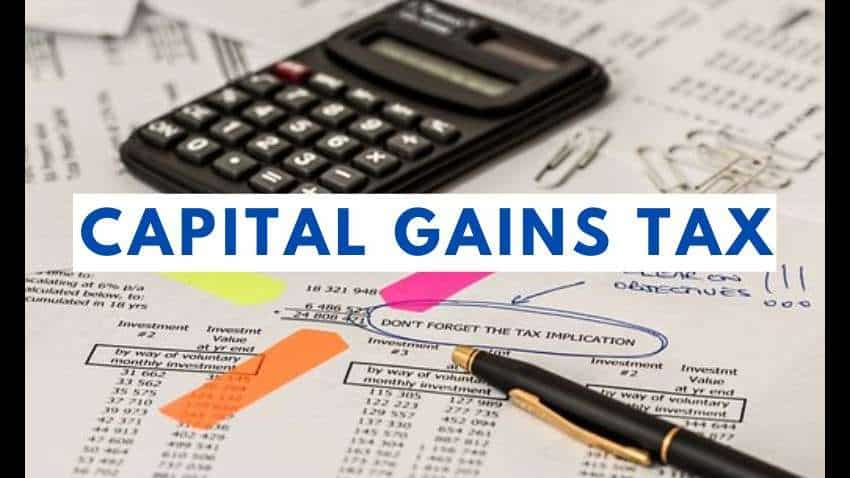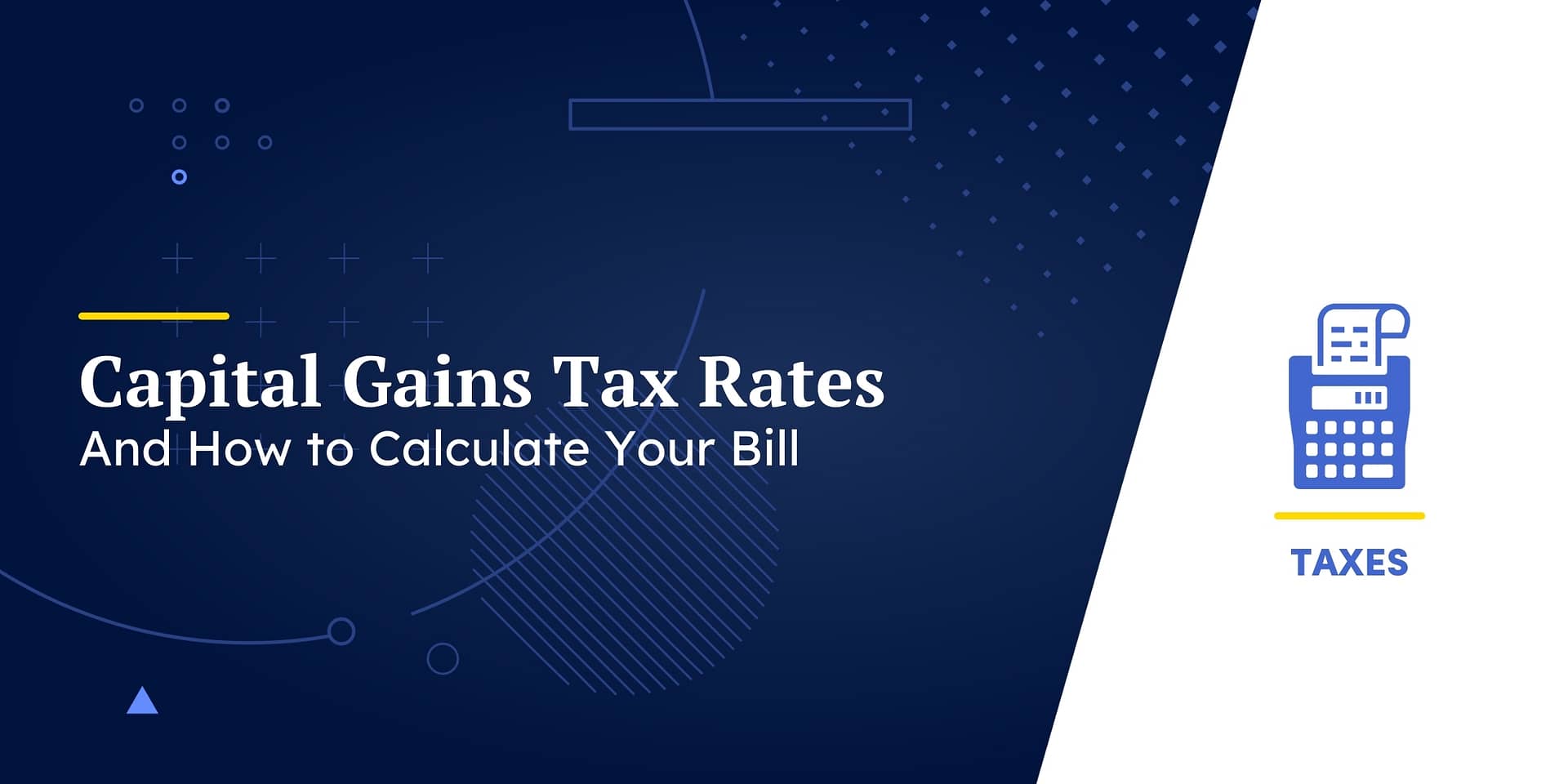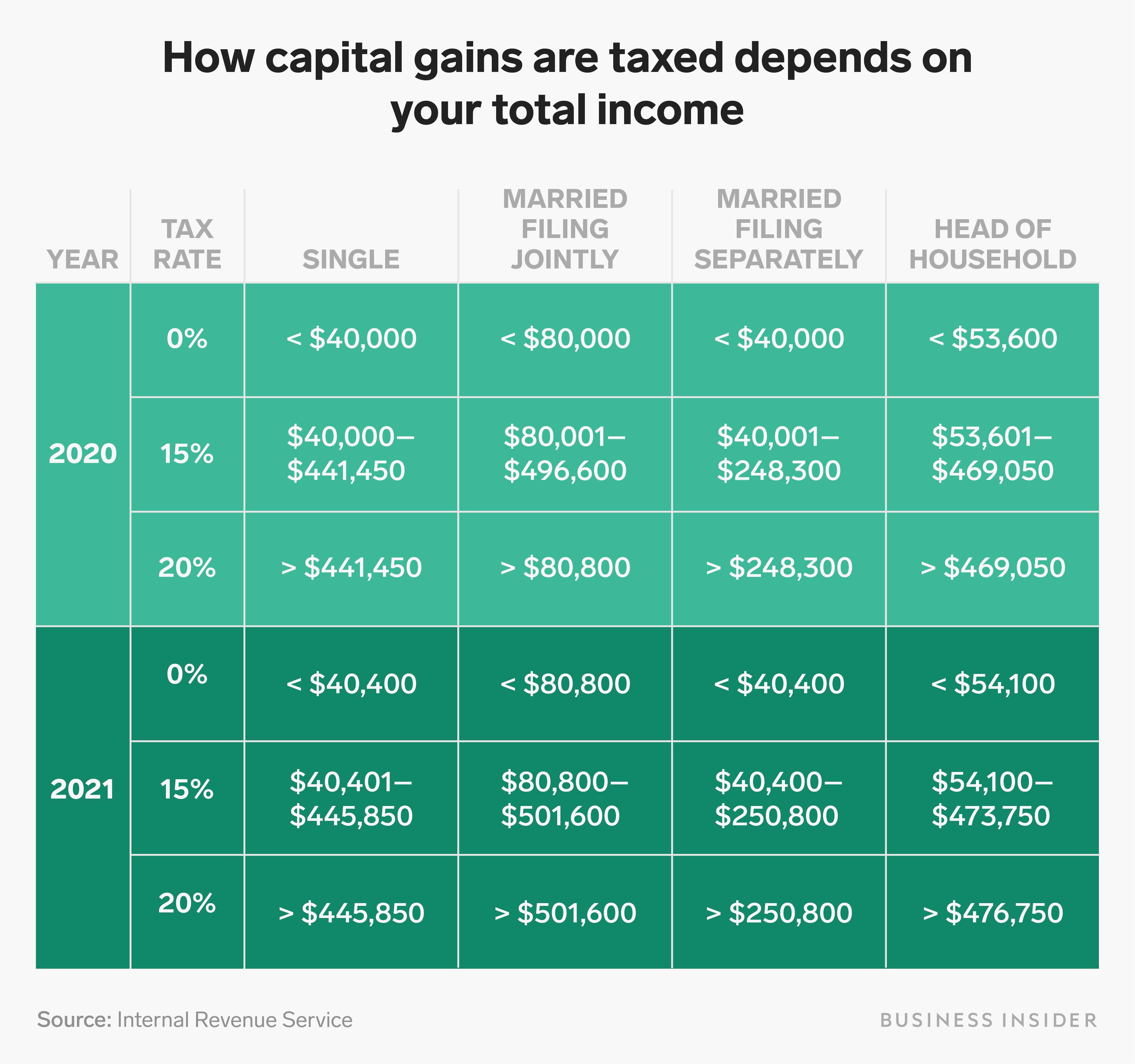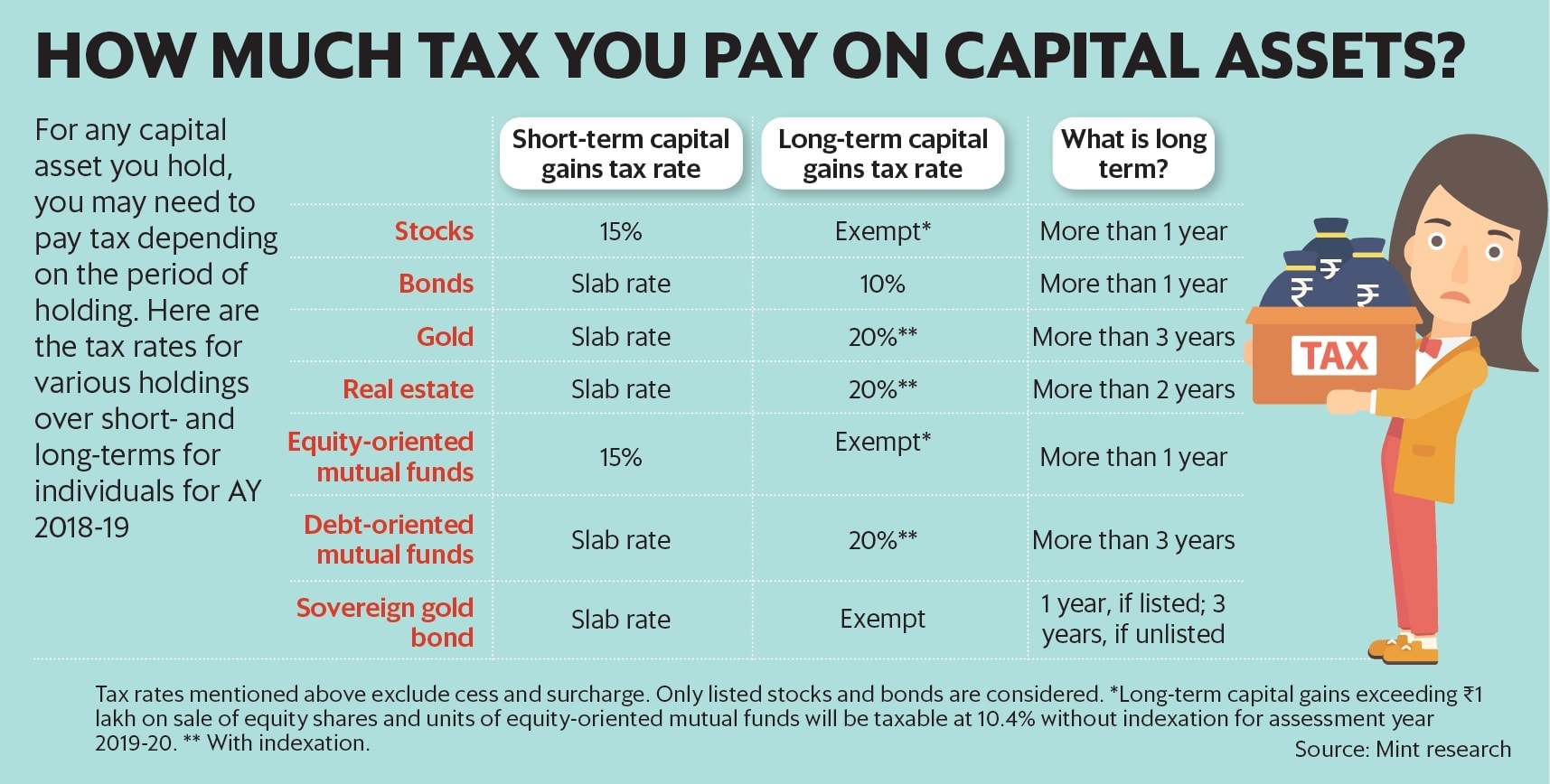What is Capital Gains Tax and How Does it Work?
Capital gains tax is a type of tax levied on the profit made from the sale of an investment or asset, such as stocks, bonds, real estate, or businesses. The tax is calculated based on the difference between the sale price and the original purchase price of the asset. Understanding how capital gains tax works is essential for investors and individuals who buy and sell assets, as it can significantly impact their financial returns.
For instance, if an individual purchases a stock for $1,000 and sells it for $1,500, the capital gain would be $500. The capital gains tax rate would then be applied to this gain, depending on the individual’s tax bracket and the holding period of the asset. In this example, if the individual is in a 20% tax bracket and held the stock for more than a year, the capital gains tax rate would be 15%, resulting in a tax liability of $75.
Capital gains tax applies to various types of investments, including stocks, bonds, mutual funds, exchange-traded funds (ETFs), and real estate investment trusts (REITs). It’s essential to note that not all investments are subject to capital gains tax, such as tax-deferred retirement accounts like 401(k)s and IRAs.
To calculate capital gains tax, individuals need to determine the gain or loss from the sale of an asset, calculate the tax rate, and apply any applicable exemptions or deductions. The tax rate depends on the individual’s tax bracket and the holding period of the asset. Short-term capital gains, which are gains from assets held for one year or less, are taxed at the individual’s ordinary income tax rate. Long-term capital gains, which are gains from assets held for more than a year, are taxed at a lower rate, typically 0%, 15%, or 20%.
Understanding the rates of capital gains tax is crucial for investors and individuals who buy and sell assets. By knowing how capital gains tax works and how it applies to different types of investments, individuals can make informed decisions about their investments and minimize their tax liability. In the next section, we will provide a step-by-step guide on how to calculate capital gains tax.
How to Calculate Capital Gains Tax: A Step-by-Step Guide
Calculating capital gains tax can be a complex process, but it can be broken down into a few simple steps. To calculate capital gains tax, you need to determine the gain or loss from the sale of an asset, calculate the tax rate, and apply any applicable exemptions or deductions.
Step 1: Determine the Gain or Loss
The first step in calculating capital gains tax is to determine the gain or loss from the sale of an asset. This is done by subtracting the original purchase price of the asset from the sale price. For example, if you purchased a stock for $1,000 and sold it for $1,500, the gain would be $500.
Step 2: Calculate the Tax Rate
The next step is to calculate the tax rate that applies to the gain. The tax rate depends on the individual’s tax bracket and the holding period of the asset. Short-term capital gains, which are gains from assets held for one year or less, are taxed at the individual’s ordinary income tax rate. Long-term capital gains, which are gains from assets held for more than a year, are taxed at a lower rate, typically 0%, 15%, or 20%.
Step 3: Apply Exemptions and Deductions
After calculating the tax rate, you need to apply any applicable exemptions or deductions. For example, if you sold your primary residence, you may be eligible for the primary residence exemption, which excludes up to $250,000 of gain from taxation. Additionally, you may be able to deduct any losses from the sale of other assets to offset the gain.
Example of Capital Gains Tax Calculation
Let’s say you purchased a stock for $1,000 and sold it for $1,500, resulting in a gain of $500. You held the stock for more than a year, so the long-term capital gains tax rate of 15% applies. You also have a loss of $200 from the sale of another asset, which you can deduct to offset the gain. The capital gains tax would be calculated as follows:
Gain: $500
Tax Rate: 15%
Tax Liability: $75 (15% of $500)
Loss: $200
Net Gain: $300 ($500 – $200)
Net Tax Liability: $45 (15% of $300)
By following these steps, you can accurately calculate your capital gains tax liability and ensure that you are taking advantage of all the exemptions and deductions available to you.
Capital Gains Tax Rates: What You Need to Know
Capital gains tax rates vary depending on the type of investment and the holding period. Understanding the current capital gains tax rates is essential for investors and individuals who buy and sell assets. In this section, we will provide an overview of the current capital gains tax rates, including the different tax brackets and rates for short-term and long-term gains.
Short-Term Capital Gains Tax Rates
Short-term capital gains are gains from assets held for one year or less. These gains are taxed at the individual’s ordinary income tax rate, which can range from 10% to 37%. The tax rate depends on the individual’s tax bracket and the amount of gain.
Long-Term Capital Gains Tax Rates
Long-term capital gains are gains from assets held for more than a year. These gains are taxed at a lower rate, typically 0%, 15%, or 20%. The tax rate depends on the individual’s tax bracket and the amount of gain.
Capital Gains Tax Brackets
The capital gains tax brackets are as follows:
0% tax rate: Applies to long-term capital gains for individuals in the 10% and 12% tax brackets.
15% tax rate: Applies to long-term capital gains for individuals in the 22%, 24%, 32%, and 35% tax brackets.
20% tax rate: Applies to long-term capital gains for individuals in the 37% tax bracket.
Net Investment Income Tax (NIIT)
In addition to the capital gains tax rates, individuals may also be subject to the Net Investment Income Tax (NIIT). The NIIT is a 3.8% tax on net investment income, including capital gains, dividends, and interest income. The NIIT applies to individuals with a modified adjusted gross income (MAGI) above $200,000 for single filers and $250,000 for joint filers.
Understanding the capital gains tax rates and brackets is essential for investors and individuals who buy and sell assets. By knowing how the tax rates apply to different types of investments, individuals can make informed decisions about their investments and minimize their tax liability.
Short-Term vs Long-Term Capital Gains Tax Rates: What’s the Difference?
When it comes to capital gains tax, the holding period of an asset can significantly impact the tax rate. Short-term capital gains, which are gains from assets held for one year or less, are taxed at a higher rate than long-term capital gains, which are gains from assets held for more than a year. In this section, we will explain the difference between short-term and long-term capital gains tax rates and provide examples of how this applies to different investments.
Short-Term Capital Gains Tax Rates
Short-term capital gains are taxed at the individual’s ordinary income tax rate, which can range from 10% to 37%. This means that if you sell an asset that you have held for one year or less, you will be subject to the same tax rate as your ordinary income.
Long-Term Capital Gains Tax Rates
Long-term capital gains, on the other hand, are taxed at a lower rate. The tax rate for long-term capital gains is typically 0%, 15%, or 20%, depending on the individual’s tax bracket and the amount of gain.
Example of Short-Term vs Long-Term Capital Gains Tax Rates
Let’s say you purchase a stock for $1,000 and sell it for $1,500 after six months. The gain would be $500, and since you held the stock for less than a year, it would be considered a short-term capital gain. If you are in the 24% tax bracket, your tax liability would be $120 (24% of $500).
Now, let’s say you purchase a stock for $1,000 and sell it for $1,500 after two years. The gain would still be $500, but since you held the stock for more than a year, it would be considered a long-term capital gain. If you are in the 24% tax bracket, your tax liability would be $75 (15% of $500).
As you can see, the holding period of an asset can significantly impact the tax rate. By holding onto an asset for more than a year, you can qualify for the lower long-term capital gains tax rate and reduce your tax liability.
How to Minimize Capital Gains Tax: Strategies and Tips
Minimizing capital gains tax is essential for investors and individuals who buy and sell assets. By implementing the right strategies and tips, you can reduce your tax liability and keep more of your hard-earned money. In this section, we will provide you with some effective ways to minimize capital gains tax.
Tax-Loss Harvesting
Tax-loss harvesting is a popular strategy used to minimize capital gains tax. This involves selling losing investments to offset gains from other investments. By doing so, you can reduce your tax liability and minimize the impact of capital gains tax on your investments.
Charitable Donations
Donating to charity can also help minimize capital gains tax. By donating appreciated securities to a qualified charity, you can avoid paying capital gains tax on the gain. Additionally, you can claim a charitable deduction on your tax return, which can further reduce your tax liability.
Tax-Deferred Exchanges
Tax-deferred exchanges, also known as 1031 exchanges, allow you to exchange one investment property for another without paying capital gains tax. This can be a great way to minimize capital gains tax and keep more of your money invested in real estate or other assets.
Hold Investments for More Than a Year
As we discussed earlier, long-term capital gains are taxed at a lower rate than short-term capital gains. By holding onto investments for more than a year, you can qualify for the lower long-term capital gains tax rate and reduce your tax liability.
Consider a Tax-Efficient Investment Strategy
A tax-efficient investment strategy can also help minimize capital gains tax. This involves investing in tax-efficient funds, such as index funds or ETFs, which have lower turnover rates and generate fewer capital gains. Additionally, you can consider investing in tax-loss harvesting funds, which are designed to minimize capital gains tax.
Consult a Tax Professional
Finally, it’s essential to consult a tax professional to ensure that you are taking advantage of all the available tax savings strategies. A tax professional can help you navigate the complex world of capital gains tax and provide you with personalized advice on how to minimize your tax liability.
Capital Gains Tax Exemptions and Deductions: What You’re Eligible For
Capital gains tax exemptions and deductions can help reduce your tax liability and keep more of your hard-earned money. In this section, we will explain the different exemptions and deductions available for capital gains tax, including the primary residence exemption and the qualified small business stock exemption.
Primary Residence Exemption
The primary residence exemption is one of the most popular exemptions for capital gains tax. This exemption allows you to exclude up to $250,000 of gain from taxation if you sell your primary residence. To qualify for this exemption, you must have lived in the residence for at least two of the five years leading up to the sale.
Qualified Small Business Stock Exemption
The qualified small business stock exemption is another exemption that can help reduce your tax liability. This exemption allows you to exclude up to 100% of the gain from the sale of qualified small business stock. To qualify for this exemption, the stock must have been held for at least five years and the business must have been a qualified small business.
Other Exemptions and Deductions
There are several other exemptions and deductions available for capital gains tax, including the exclusion of gain from the sale of a principal residence, the exclusion of gain from the sale of qualified small business stock, and the deduction of capital losses. It’s essential to consult with a tax professional to determine which exemptions and deductions you are eligible for.
How to Claim Exemptions and Deductions
To claim exemptions and deductions for capital gains tax, you must complete the necessary forms and schedules on your tax return. For example, if you are claiming the primary residence exemption, you must complete Form 8949 and Schedule D. It’s essential to keep accurate records and documentation to support your claims.
Common Mistakes to Avoid
When claiming exemptions and deductions for capital gains tax, it’s essential to avoid common mistakes that can result in penalties and fines. For example, failing to report capital gains or losses, or claiming exemptions and deductions that you are not eligible for. It’s essential to consult with a tax professional to ensure that you are in compliance with all tax laws and regulations.
How to Report Capital Gains Tax on Your Tax Return
Reporting capital gains tax on your tax return can be a complex process, but it’s essential to ensure that you are in compliance with all tax laws and regulations. In this section, we will explain how to report capital gains tax on your tax return, including how to complete the necessary forms and schedules.
Forms and Schedules Required
To report capital gains tax on your tax return, you will need to complete the following forms and schedules:
Form 8949: Sales and Other Dispositions of Capital Assets
Schedule D: Capital Gains and Losses
Form 1040: Individual Income Tax Return
How to Complete Form 8949
Form 8949 is used to report the sale or exchange of capital assets, including stocks, bonds, and real estate. To complete Form 8949, you will need to provide the following information:
Description of the asset sold or exchanged
Date of sale or exchange
Proceeds from the sale or exchange
Cost or basis of the asset
Gain or loss from the sale or exchange
How to Complete Schedule D
Schedule D is used to report capital gains and losses from the sale or exchange of capital assets. To complete Schedule D, you will need to provide the following information:
Total gains and losses from the sale or exchange of capital assets
Net gain or loss from the sale or exchange of capital assets
Tax rate applied to the net gain or loss
How to Report Capital Gains Tax on Form 1040
Once you have completed Form 8949 and Schedule D, you will need to report the capital gains tax on Form 1040. To do this, you will need to enter the net gain or loss from Schedule D on Line 13 of Form 1040.
Tips for Accurate Reporting
To ensure accurate reporting of capital gains tax on your tax return, it’s essential to keep accurate records and documentation of all sales and exchanges of capital assets. Additionally, it’s recommended that you consult with a tax professional to ensure that you are in compliance with all tax laws and regulations.
Capital Gains Tax Planning: Why It’s Essential for Your Financial Future
Capital gains tax planning is an essential aspect of your financial future. It can impact your investment strategy, overall wealth, and even your retirement goals. In this section, we will emphasize the importance of capital gains tax planning and provide tips on how to incorporate it into your financial planning.
Why Capital Gains Tax Planning is Important
Capital gains tax planning is important because it can help you minimize your tax liability and maximize your investment returns. By understanding how capital gains tax works and how it applies to your investments, you can make informed decisions about your investment strategy and reduce your tax liability.
How to Incorporate Capital Gains Tax Planning into Your Financial Planning
To incorporate capital gains tax planning into your financial planning, you should consider the following tips:
Understand your investment goals and risk tolerance
Develop a diversified investment portfolio
Consider tax-loss harvesting and charitable donations
Take advantage of tax-deferred exchanges
Consult with a tax professional or financial advisor
Benefits of Capital Gains Tax Planning
Capital gains tax planning can provide several benefits, including:
Minimized tax liability
Maximized investment returns
Improved financial planning and decision-making
Increased wealth and retirement savings
Conclusion
In conclusion, capital gains tax planning is an essential aspect of your financial future. By understanding how capital gains tax works and how it applies to your investments, you can make informed decisions about your investment strategy and reduce your tax liability. By incorporating capital gains tax planning into your financial planning, you can minimize your tax liability, maximize your investment returns, and achieve your financial goals.






